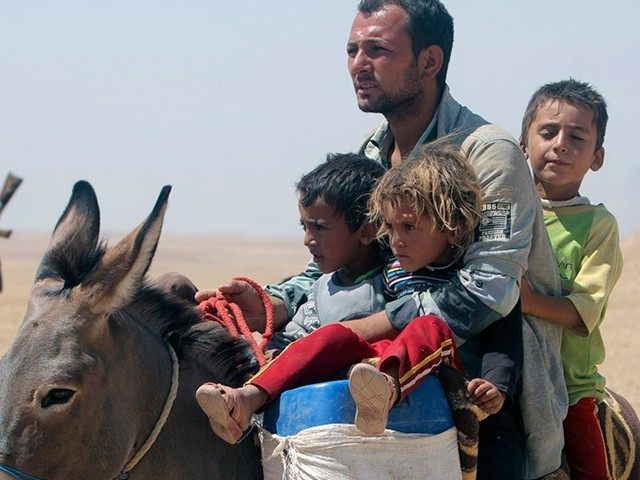The Islamic State (ISIS/ISIL) attempted to eliminate the Yazidi population in Syria and Iraq over the summer. After airstrikes pushed back the terrorist group, those who survived slowly began making their way home to identify loved ones in mass graves.
People discovered mass graves in Pirdya with 24 bodies, Xanesur with 26 bodies, and another 52 bodies were found in Zummar and Senun. A committee was formed in September to excavate the graves and put together information on missing individuals.
“We have information that there are many mass graves in Shingal,” said Captain Falah Hassan. “But many of them are located in areas that are yet to be liberated. We have identified 17 mass graves. We managed to unearth the bodies in two of the 17 graves. Then we received orders that excavation must stop.”
Kurdish President Masoud Barzani gave the orders to stop the excavations. Hassan insists this is for scientific grounds, not political. The bodies were sent to Duhok for autopsies.
“We have to wait for the foreign experts to come and excavate the bodies and document the mass graves for later use in the genocide case,” said Hassan, adding:
We are waiting for complete liberation of Shingal, then inviting foreign experts and UN to excavate the graves. We will conduct DNA test for all the bodies, then we will announce the names. An identity card has been found that belongs to one of the bodies, but we do not know which body. They are all mixed.
But the survivors want to bury their dead loved ones. The majority of victims in the graves were shot or killed by knives. Seventeen victims in Zummar and Senun were decapitated, and officials did not find their heads.
“My dad was in Xanesur,” said Ali Bazu. “Our house key was in my father’s pocket. I figured one of the bodies must be my father’s, from the key to our door. His remains were not handed to me. They told me the body is going to be taken for an autopsy. I do not know where the body is now.”
DNA tests will cost millions.
“In Shingal 5,000 people are missing, [and]for each missing person’s DNA, [the] cost is $30,000,” an anonymous source told Rudaw. “If we are to conduct the tests the cost is $300 million U.S. dollars.”
In early February, Qassim Simo, the head of the Kurdish security forces in Snuny, said he thought officials would find more graves as forces continue to grab land back from the Islamic State. The one in Snuny contained sixteen bodies. Forensic experts could not immediately determine the cause of death, but women and children were among the dead.
“We found clothes, skulls, and shoes,” explained Simo. “We couldn’t recognise their faces; there were just bones and ID cards.”
The Islamic State considers the Yazidis “devil-worshippers.” The ancient religion combines Zoroastrianism and Sufi Islam, which dates back to ancient Mesopotamia. The International Business Times reports:
They believe that God and seven angels protect the world, and one of these angels, named Malak Tawus and believed to be embodied by a peacock on Earth, was thrown out of paradise for refusing to bow to Adam.
Muslims view the figure as a “fallen angel” and consider Yazidis to be devil-worshippers and apostates.

COMMENTS
Please let us know if you're having issues with commenting.